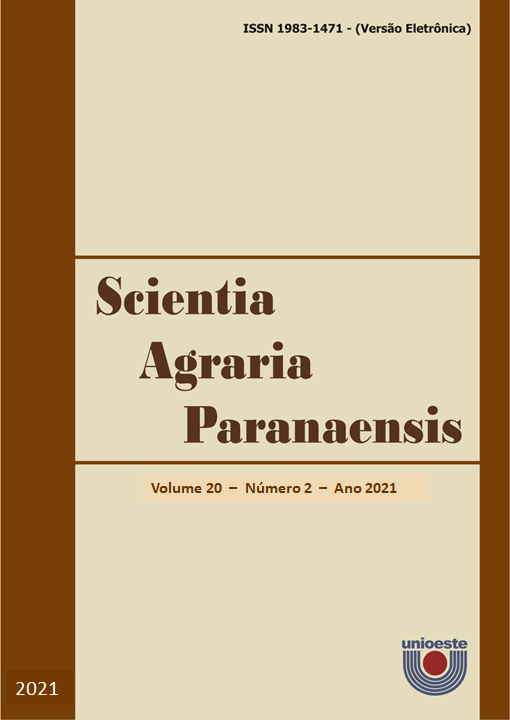Chemical control of adult sourgrass in coffee crops, through various associations
DOI:
https://doi.org/10.18188/sap.v20i2.27312Resumo
Weed management in coffee plants is carried out largely through the adoption of chemical control, with the use of herbicides. In this context, one of the species that most affects the development of coffee plants, and due to its difficulty in control, is sourgrass. Above all, most sourgrass biotypes are not efficiently controlled with the herbicide glyphosate, which is the most used in coffee growing. Thus, the search for strategies that can minimize the damage caused by this weed, appears with increasing demand, due to the great damage to coffee plants. Therefore, the objective of this study was to evaluate the chemical control of adult sourgrass in coffee plants, through several associations. Treatment control efficiency was visually evaluated, where a scale ranging from 0 to 100 was used, with 0 corresponding to the absence of symptoms and 100 corresponding to the total control of weed plants by the action of herbicides, respectively. This evaluation method was used at 7, 14, 21, 28, 35 and 42 days after application. The mixture of the herbicides Fluazifop-p-butyl and Clethodim is more efficient in controlling sourgrass over time. The association of the herbicide ammonium glufosinate with systemic herbicides implies a reduction in the control capacity of sourgrass plants over time.
Downloads
Publicado
Como Citar
Edição
Seção
Licença
Aviso de Direito Autoral Creative Commons
Política para Periódicos de Acesso Livre
Autores que publicam nesta revista concordam com os seguintes termos:
1. Autores mantém os direitos autorais e concedem à revista o direito de primeira publicação, com o trabalho simultaneamente licenciado sob a Licença Creative Commons Attribution que permite o compartilhamento do trabalho com reconhecimento da autoria e publicação inicial nesta revista.2. Autores têm autorização para assumir contratos adicionais separadamente, para distribuição não-exclusiva da versão do trabalho publicada nesta revista (ex.: publicar em repositório institucional ou como capítulo de livro), com reconhecimento de autoria e publicação inicial nesta revista.
3. Autores têm permissão e são estimulados a publicar e distribuir seu trabalho online (ex.: em repositórios institucionais ou na sua página pessoal) a qualquer ponto antes ou durante o processo editorial, já que isso pode gerar alterações produtivas, bem como aumentar o impacto e a citação do trabalho publicado (Veja O Efeito do Acesso Livre).
Licença Creative Commons
Esta obra está licenciada com uma Licença Creative Commons Atribuição-NãoComercial-CompartilhaIgual 4.0 Internacional, o que permite compartilhar, copiar, distribuir, exibir, reproduzir, a totalidade ou partes desde que não tenha objetivo comercial e sejam citados os autores e a fonte.


